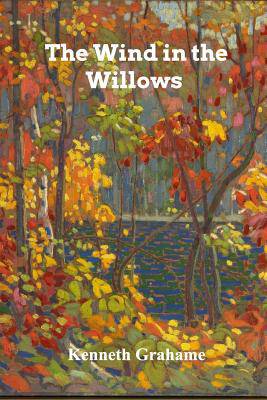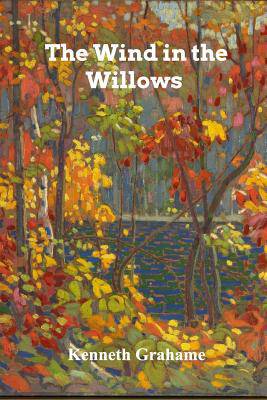
- Afhalen na 1 uur in een winkel met voorraad
- Gratis thuislevering in België vanaf € 30
- Ruim aanbod met 7 miljoen producten
- Afhalen na 1 uur in een winkel met voorraad
- Gratis thuislevering in België vanaf € 30
- Ruim aanbod met 7 miljoen producten
Zoeken
Omschrijving
The Wind in the Willows is a children's novel by British novelist Kenneth Grahame, first published in 1908. Alternately slow-moving and fast-paced, it focuses on four anthropomorphised animals (Mole, Rat, Toad, and Badger) in a pastoral version of Edwardian England. The novel is notable for its mixture of mysticism, adventure, morality, and camaraderie, and celebrated for its evocation of the nature of the Thames Valley. In 1908, Grahame retired from his position as secretary of the Bank of England. He moved back to Berkshire, where he had lived as a child, and spent his time by the River Thames, doing much as the animal characters in his book do - to quote, "simply messing about in boats" - and expanding the bedtime stories he had earlier told his son Alastby British novelist Kenneth Grahame, first published in 1908. Alternately slow-moving and fast-paced, it focuses on four anthropomorphised animals (Mole, Rat, Toad, and Badger) in a pastoral version of Edwardian England. The novel is notable for its mixture of mysticism, adventure, morality, and camaraderie, and celebrated for its evocation of the nature of the Thames Valley. In 1908, Grahame retired from his position as secretary of the Bank of England. He moved back to Berkshire, where he had lived as a child, and spent his time by the River Thames, doing much as the animal characters in his book do - to quote, "simply messing about in boats" - and expanding the bedtime stories he had earlier told his son Alastair into a manuscript for the book. The novel was in its 31st printing when playwright A. A. Milne adapted part of it for the stage as Toad of Toad Hall in 1929. In 1949, the first film adaptation was released by Disney as one of two segments in the package film. In 2003, The Wind in the Willows was listed at #16 in the BBC's survey The Big Read.
Specificaties
Betrokkenen
- Auteur(s):
- Uitgeverij:
Inhoud
- Aantal bladzijden:
- 190
- Taal:
- Engels
Eigenschappen
- Productcode (EAN):
- 9780368825538
- Verschijningsdatum:
- 1/05/2020
- Uitvoering:
- Paperback
- Formaat:
- Trade paperback (VS)
- Afmetingen:
- 152 mm x 229 mm
- Gewicht:
- 263 g

Alleen bij Standaard Boekhandel
+ 19 punten op je klantenkaart van Standaard Boekhandel
Beoordelingen
We publiceren alleen reviews die voldoen aan de voorwaarden voor reviews. Bekijk onze voorwaarden voor reviews.











